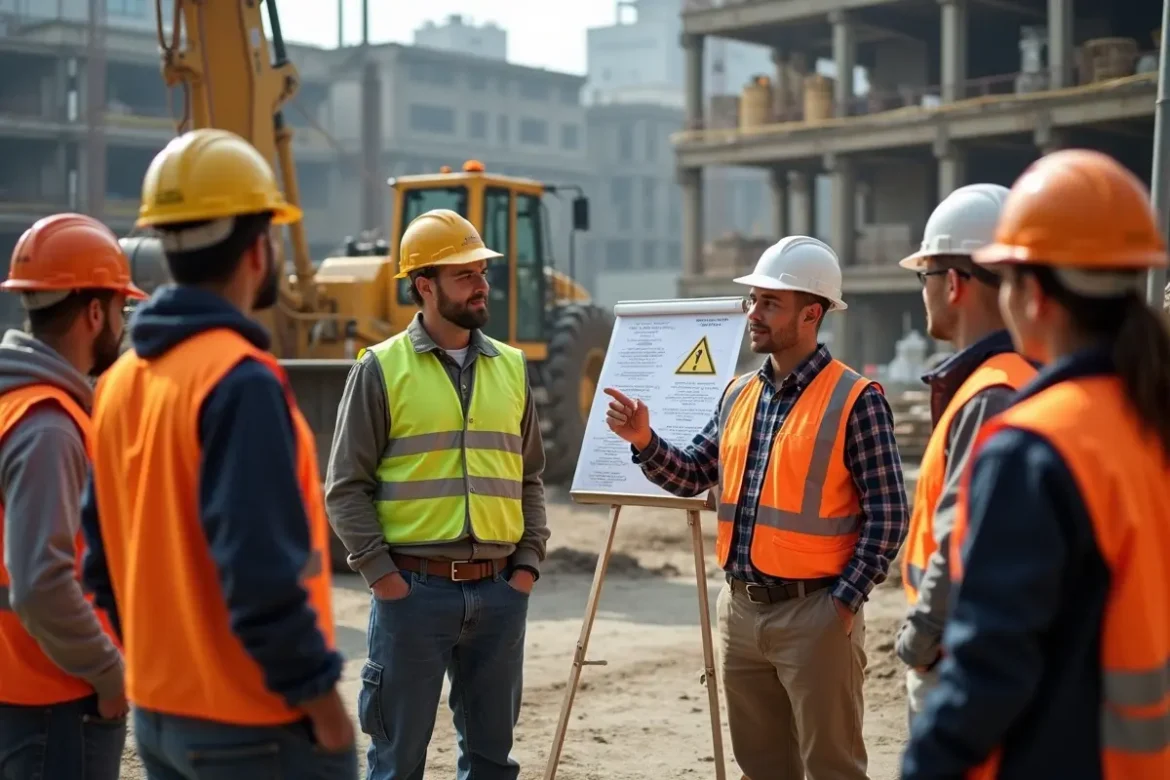
Table of Contents:
- Introduction
- What Does OSHA 10 Cover for Subcontractors and Laborers?
- How to Complete OSHA 10 Construction
- Take Control of Your Safety with the OSHA 10 Course
Are you a subcontractor or a laborer working in a dangerous environment every day? Every shift brings new risks, and no two days feel the same. Heavy equipment and constant movement mean hazards are always around. Even small mistakes can lead to big injuries. That’s why safety training like the OSHA 10 construction course has become such a focus in recent years.
According to Oregon OSHA’s FY 2024 report, 110,426 people from small businesses and high-hazard industries took part in OSHA-related online training. The numbers show how seriously workers are taking safety. If you are a laborer, a subcontractor, or in a similar job role, the OSHA 10 construction course provides the first layer of protection to you. Keep reading to know how this training gives workers the skills to spot hazards.
Contents
What Does OSHA 10 Cover for Subcontractors and Laborers?
U.S. Bureau of Labor Statistics data from 2024 shows that construction workers face high risks of injuries and illnesses. For example, residential building construction reported 2.5 cases per 100 full-time workers. Subcontractors and laborers are often on the front lines, where these incidents happen. OSHA 10 training helps workers learn how to stay safe and prevent accidents.
The following is what the OSHA 10 construction course covers for subcontractors and laborers.
Mandatory Topics (7 hours)
Mandatory topics are the core lessons every worker must take. They are the same for all workers, no matter the job site. These topics give the foundation for safety on any construction site.
The following are the modules of the mandatory training:
- Introduction to OSHA (2 hours): Learn how OSHA protects workers, what your employer must do, and how to report unsafe conditions.
Focus Four Hazards (4 hours): The top causes of serious injuries: falls, electrocution, being hit by objects, and getting caught in or between equipment and materials. - Personal Protective Equipment (30 minutes): How to use hard hats, gloves, goggles, and other protective gear correctly.
- Health Hazards (30 minutes): How to protect yourself from dust, fumes, chemicals, and other risks that are not easy to see.
Elective Topics (At least 2 hours)
Elective topics let you focus on the hazards you face most. Subcontractors and laborers often work with different tools and equipment, so this time is used to cover extra safety areas depending on your work.
Some examples include:
- Scaffolding safety
- Excavation and trench protection
- Cranes, hoists, and elevators
- Using power tools safely
- Moving and storing materials correctly
This time is flexible, so you can spend it on what matters most to your job.
Optional Time (Up to 1 hour)
Optional time is extra training. Instructors use it to answer questions or go deeper into topics that come up on your job site. Subcontractors and laborers can learn from real-life examples. This helps make the training more useful for everyday work.
For example, you might learn how to lift heavy materials safely, or how to stay steady on scaffolds in windy conditions. You could also ask about working near cranes, using tools safely, or protecting yourself from dust and fumes.
How to Complete OSHA 10 Construction
If you work on a construction site, safety comes first. OSHA 10 certification shows you understand job site hazards and follow safety rules. It protects both you and your employer. To complete the course, follow the given steps:
1. Find and Register for a Course
Look for an authorized OSHA 10 provider. You can take the course in-person or online, and many online options let you work at your own pace, so you don’t have to miss a day on the job. Sign up and make sure your schedule works with the training.
2. Learn and Complete the Training
Follow along with the lessons and ask questions whenever you’re unsure. Join the activities and examples your instructor gives so you can see how hazards happen on real job sites and learn how to stay safe.
3. Get Your OSHA 10 Card and Use It
Once you finish, you receive an official OSHA 10 card. Use what you learned every day to spot hazards and keep yourself and your team safe.
Take Control of Your Safety with the OSHA 10 Course!
Every day on a construction site brings risks—but you can take control. OSHA 10 construction course gives you the skills to spot hazards. You will learn how to use protective gear correctly. It also teaches you to follow safety rules that protect you and your team.
When you complete the course and earn your OSHA 10 card, you take a smart step toward staying safe and avoiding accidents. After certification, you can apply what you learn and make safety a habit.
Don’t wait for something to go wrong. Take the OSHA 10 course, get certified, and set yourself up to work with confidence and keep everyone on-site safe.



